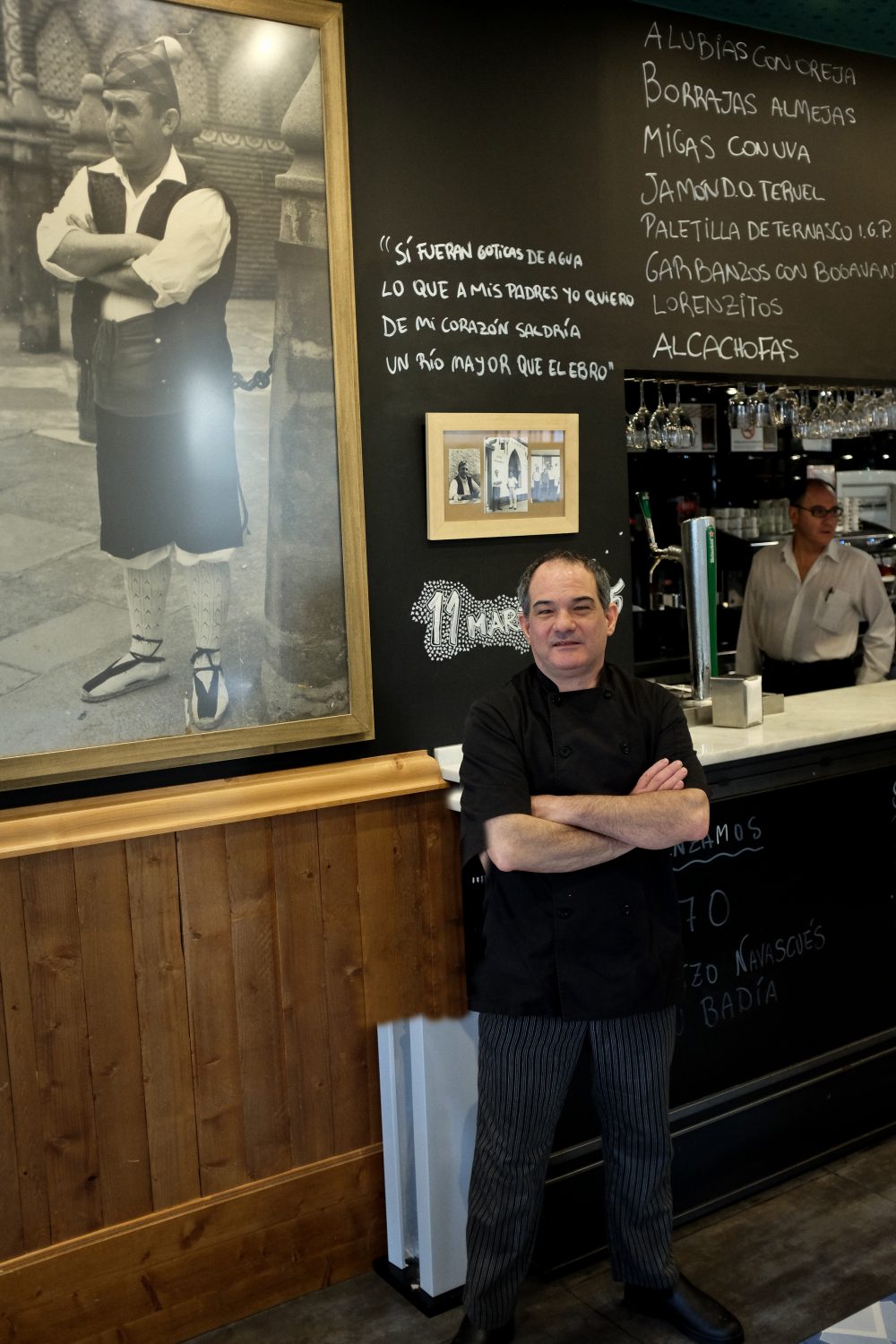Surrounded by six poultry stands inside Zaragoza’s central market, it’s the sound of laughter that first pulls me into Mama Tere’s. Four beaming women hack at whole chickens with a grace that dis-guises their brute work, joking as they separate drumsticks from thighs with enormous scissors mounted to the counter.
As they skirt past one another to fill orders for a blur of post-siesta regulars, I spot the dish that brought me to this historic Spanish city in the first place. It’s chicken chilindrón, a savory braise of skin-on parts steeped in a sauce of tomatoes, bell peppers and onion simmered in white wine. Think of it as Spain’s answer to Italian cacciatore, but this quicker meal relies more on the freshness of ingredients than on a low, slow simmer.
“The recipe is really easy. If I don’t have anything prepared, I’ll say, ‘OK, I’ll make a chilindrón,’” says Rosa Maria Loraque Gimeno, whose recipe fills a tray in the glass case. She makes it at home several times a month. “Normally, I have everything already in the kitchen.”
The prepared food at the market usually is for takeout only, but Loraque invites me behind the counter while she heats a plate and hands me a fork. The sauce, slightly sweet from the onion, tastes like a garden on a plate, with small but distinct pieces of each vegetable in a bright, tomatoey sauce coating tender chicken.
Simply delicious, but after nearly a week eating through Zaragoza, it’s clear there are no hard and fast rules with chilindrón. The only universal ingredients are the three vegetables, wine and bay leaf. Not even chicken is required, possibly because as recently as the 1960s, chicken was considered a luxury in Spain reserved for holidays and Sunday dinners.
Loraque’s version exhibits a deeper richness beyond the typical ingredients; she sneaks in bits of cured ham and a teaspoon of paprika, coyly admitting her additions while holding her hand half over her mouth. Other variations also are common. At one restaurant, it’s cooked sous vide to produce silky boneless thighs in a sauce that melts on the plate. At another, it’s mostly peppers swimming in tomato sauce with hardly any onion.
Elsewhere across Spain, meat usually is either stewed with lots of liquid, potatoes and vegetables, or it is cooked plain over a grill or flat griddle, served with a drizzle of olive oil and salt. Chilindrón falls somewhere between, a saucy braise that some think may reflect an influence from just across the mountains to the north.
“In the north of Spain, not just Aragón, because we’re bordering France, we have some influence of French cooking,” says Alberto Mur, chef de cuisine of La Rinconada de Lorenzo, a traditional restaurant in the university district. “Let’s say it’s a bit of fusion with our historical cooking and something a little more current.”
"Your mother always gives it a little personal touch."

Mur prepares the dish with salt cod, leaning toward a more delicate sauce to highlight the natural flavor of the vegetables, omitting the paprika and ham. The chunks of vegetable are larger, but he uses the same process for chicken as he does for fish. The meat is browned in a pot and removed, then garlic and sweet onion are cooked until they soften. Tomatoes and bell pepper go in with white wine, a little water and a bay leaf. The chicken goes back in and the flavor concentrates as the sauce cooks down, all coming together in about half an hour.
“This is a sauce of garden vegetables that doesn’t require a lot of time,” says Mur. “You can put it with fish, with meats, or even, for example, with rabbit or pork. It comes out in different forms, but it’s always good.”
With such a flexible recipe, we combined elements of each approach we liked. We added smoked paprika for a distinctively Spanish touch and opted for the stronger flavor of red onion. Loraque would have approved, since even her version is different from what she originally learned.
“Your mother always gives it a little personal touch,” she says. Then later, “What you’ve seen at home, of course, always you add your own little touch to make it a little better.”






